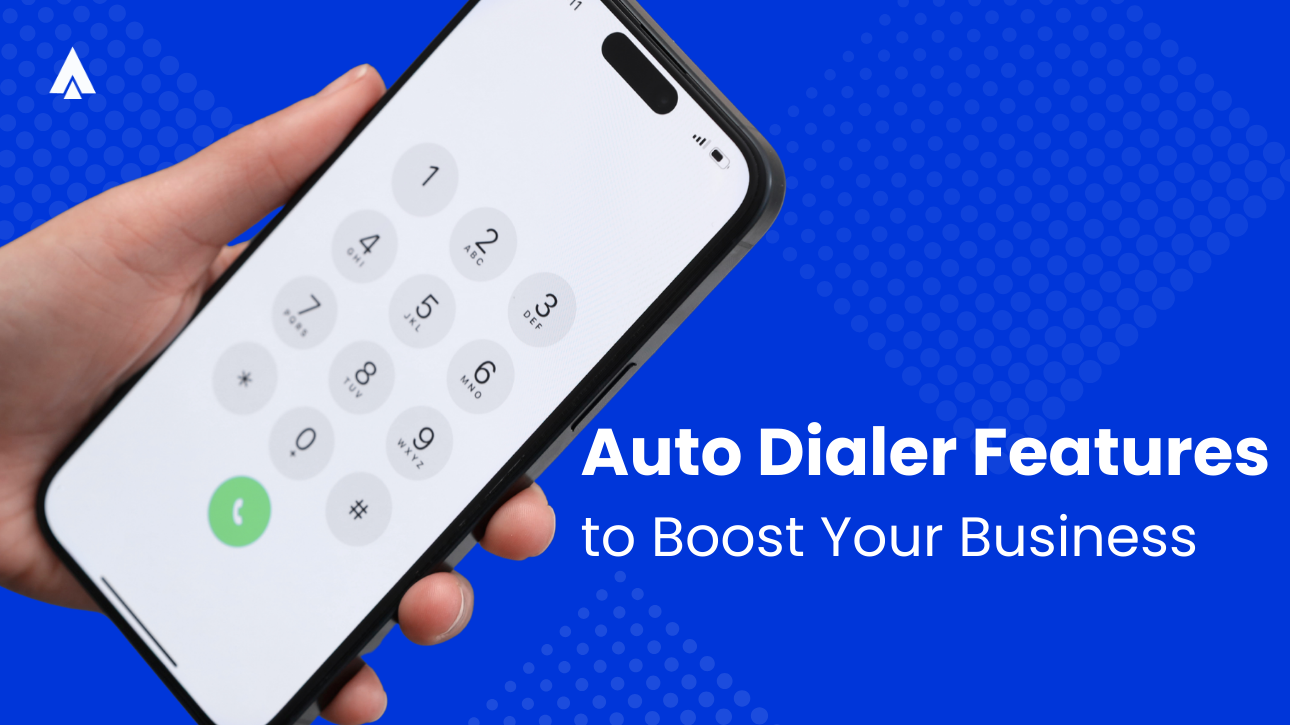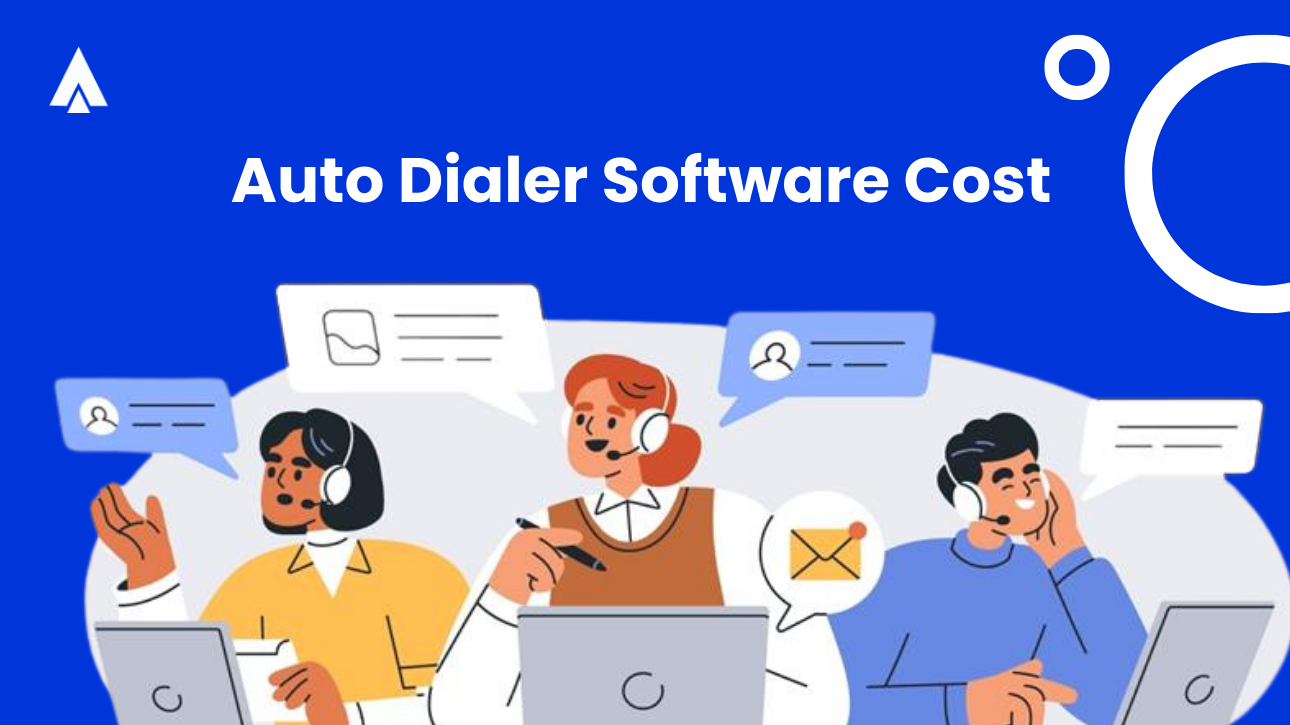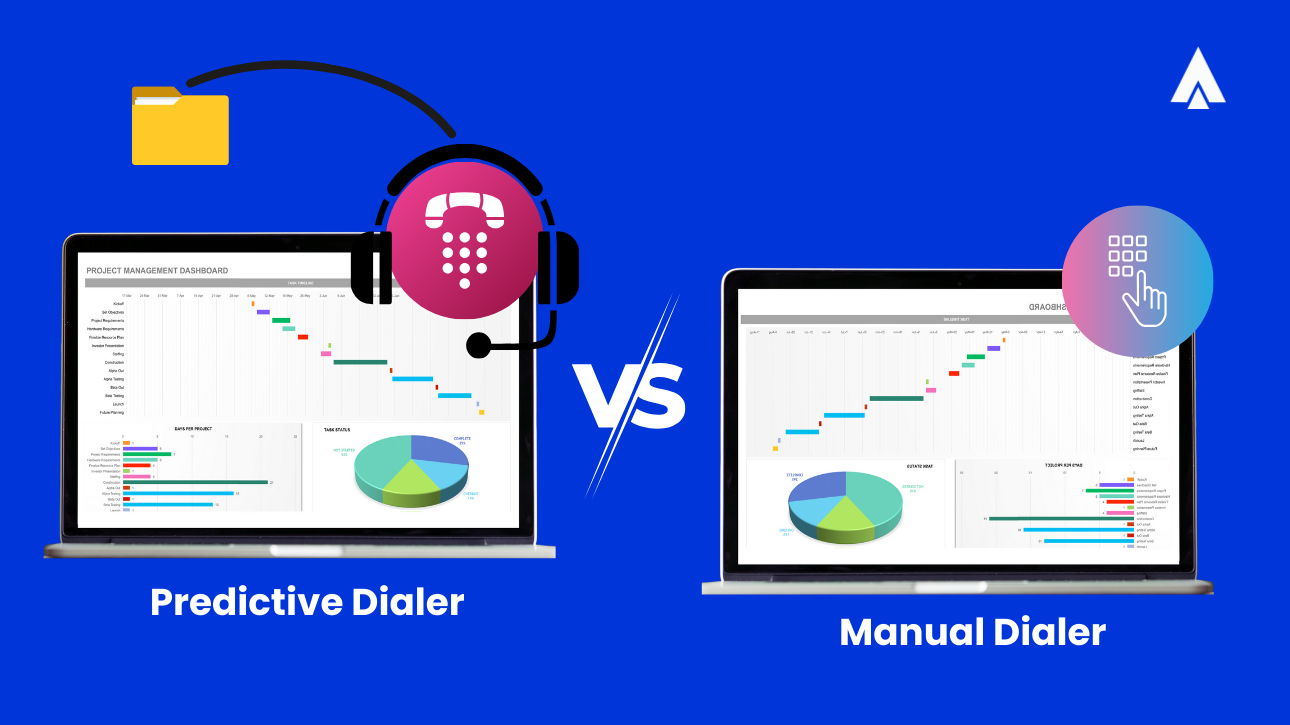Your sales team spends the majority of their day on non-selling activities like dialing numbers, waiting for connections, and hitting voicemails. That’s a significant amount of expensive labor hours generating zero revenue.
Predictive dialer promise to reclaim that time. They can help boost agent productivity by automating the dialing process and connecting agents only to live conversations. That is why the predictive dialer software market grew to $3.20 billion in 2024 and is expanding at 42.3% annually through 2030.
But while evaluating solutions, sales and support leaders are faced with a grave challenge. They struggle to understand whether the investment delivers genuine ROI and what drives the costs.
In this guide, we break down predictive dialer pricing across deployment models and highlight the hidden costs vendors don’t advertise upfront. This way, you can evaluate the total cost of ownership against measurable productivity gains.
Read on.
Key Cost Factors in Predictive Dialer Pricing
There are multiple variables that influence the total cost of implementing a predictive dialer. Understanding these factors helps leaders build accurate budgets and avoid unexpected expenses.
1. Feature Complexity and Capabilities
Basic predictive dialers offer an automated dialer system and simple call distribution. Advanced systems include intelligent features like voicemail detection, automatic lead management, CRM integration, real-time analytics, and AI-powered call routing. Each additional capability increases development complexity and, consequently, pricing.
For context, basic plans might start at $16 per user monthly, while platinum tiers with comprehensive features reach $40 or more per user. The feature gap between tiers can significantly impact operational effectiveness. Hence, it is essential to align capabilities with the actual needs of your business rather than defaulting on the lowest-cost option.
Recommended Read: Predictive dialer features
2. Team Size and Agent Count
Predictive dialer cost also scales directly with team size. Some providers might charge per-user fees, meaning a 10-agent team costs considerably less than a 100-agent operation. However, volume discounts often apply for larger teams, potentially reducing per-seat costs as organizations scale.
Some vendors structure pricing around concurrent users rather than total licenses. This offers increased flexibility for teams with rotating shifts. It can also reduce costs for operations that don’t require all agents to be active simultaneously.
3. Call Volume and Usage Patterns
Monthly call volume directly impacts predictive dialer costs, particularly for cloud communication solutions that include usage-based pricing components.
The providers might also set monthly minute limits within subscription packages. If you exceed these limits, you face per-minute overage charges. So, if your operations are high-volume, you need to carefully evaluate included minutes versus anticipated usage to avoid budget surprises.
4. Integration Requirements
Seamless CRM integration has become non-negotiable for modern sales operations. Basic integrations with popular platforms like Salesforce or HubSpot are standard. However, custom integrations with proprietary systems might require additional development and associated costs.
Integration expenses manifest as either one-time setup fees or ongoing maintenance charges. It all depends on the complexity and vendor policies. If you have a unique technology stack, you should anticipate these costs during the budgeting phase.
Hidden Costs in Predictive Dialer Pricing
Advertised per-user pricing rarely tells the complete financial story. Several additional cost categories might catch you off guard during implementation or ongoing operations.
Here are a the most common ones:
1. Implementation and Training:
Most vendors charge separate fees for initial system implementation, ranging from a few hundred to several thousand dollars depending on complexity. Agent training is another often-overlooked expense. It can take up a significant portion of your budget whether delivered by the vendor or requiring internal resources.
Some providers offer optional professional setup services with an extra charge for expert assistance. Before budgeting, you need to decide whether these services deliver sufficient value to justify the added expense.
2. Support and Maintenance Tiers
Standard subscriptions typically include basic support during business hours. Premium support with 24/7 availability, dedicated account managers, or guaranteed response times might require upgrading to higher-priced tiers. Barring certain providers like Acefone, extra support costs extra.
3. Data Storage and Retention
Your support team relies heavily on storing and analyzing call recordings and interaction data. They need it to understand agent performance and improve customer interactions. However, maintaining these records for extended periods can lead to higher data storage and retention costs. Most providers offer up to six-month free storage period, after that, you need to pay to retain the data.
Recommended Read: Auto Dialer Cost
ROI Considerations for Predictive Dialer Investment
In order to evaluate predictive dialer pricing completely, you need to look beyond costs to understand the return on investment.
Here’s how you can do that:
1. Agent Productivity Improvements
Predictive dialers eliminate manual dialing, reduce idle time between calls, and ensure agents connect only with answered calls. These efficiency gains typically translate to greater productivity compared to manual dialing operations. This means that your agents complete significantly more conversations per shift.
2. Cost Per Conversation Reduction
Predictive dialers reduce dialing costs by maximizing agent talk time, eliminating wasted effort on busy signals and improving connection rates.
You can calculate potential savings by comparing current cost per productive conversation against projected costs with predictive dialing technology. Just remember to factor in both software costs and productivity improvements.
3. Revenue Impact from Increased Connections
More conversations with qualified prospects directly impact pipeline generation and revenue outcomes. Model the revenue value of additional qualified conversations enabled by predictive dialing efficiency against the technology investment costs.
4. Cloud vs On-Premise Systems
So far, we have discussed the predictive dialer cost structure, including the hidden cost. But there is another major component that influences pricing structure: Cloud vs On-Premises Systems.
Whichever option you choose significantly influences both initial investment and long-term budgeting decisions. Each model offers distinct advantages aligned with different organizational priorities.
Let’s understand this in detail.
5. Cloud-Based Predictive Dialers
These are automated dialer system hosted on cloud that use algorithms to predict agent availability and connect live calls efficiently. They offer scalability, remote access, and minimal hardware requirements.
- Cost Structure: Cloud solutions eliminate upfront hardware investments, replacing them with predictable monthly subscriptions. This approach preserves capital for other strategic initiatives while providing immediate access to enterprise-grade technology.
- Scalability Benefits: In 2024, cloud deployment captured more than 54% of the predictive dialer market share. This was driven largely by scalability advantages. This means with a predictive dialer, you can add or remove user licenses with minimal friction, aligning costs with seasonal demand fluctuations.
- Maintenance and Support: With cloud-solution, the providers handle all system maintenance, security updates, and infrastructure management. This way, you can eliminate the need for a dedicated IT team focused on dialer management. All these bits of savings ultimately reduce the total cost of ownership beyond the visible subscription price.
6. On-Premise Solutions
These systems are installed and managed using in-house servers and infrastructure that your company owns. You have full control over data and customization but will have to pay higher upfront and maintenance costs.
- Upfront Investment: On-premise solutions require significant expenditure including software licenses, infrastructure, equipment, and installation services. If you are planning to get an on-premise solution, make sure to account for these substantial initial costs.
- Control and Customization: The higher initial investments, the greater control over system configuration, data security, and customization capabilities. If you have strict compliance requirements, this control might justify the additional expense.
- Ongoing Operational Costs: Beyond initial setup, on-premise solutions also incur recurring expenses. You have to pay extra for each hardware maintenance, software updates, IT personnel time, and infrastructure upgrades. These costs accumulate over the system’s lifespan and should factor into total cost of ownership calculations.
Top 5 Cost-Efficient Predictive Dialer Software
| Solution | Key Features | Best For | Pricing | Demo |
| Acefone Predictive Dialer | Click-to-call, inbound routing, auto time-zone management, CRM integrations, campaign/list management, pacing ratio, 3-way calling and AI-based Post Conversation Analytics. | Mid-to-large outbound teams (Real Estate, BFSI, EdTech, Healthcare) | Custom Price Quote | Yes. |
| Convoso | AI-driven predictive dialer, voicemail drop, real-time analytics, high-volume outbound, white-glove support. | High-volume contact centers needing advanced outbound scale | Starting from US$90/user/month | Yes |
| JustCall | Sales dialer with predictive mode, CRM integrations, voicemail detection, cloud-first setup. | Sales & support teams needing faster outbound and CRM sync | Starting from US$29/user/month (base) – predictive + plan higher. | Yes |
| Readymode | Predictive dialer with built-in CRM, local-presence dialing, compliance/Do-Not-Call features, unlimited outbound minutes. | Outbound sales teams focused on connect-rate, compliance (e.g., Real Estate, BPO) | Custom quote | Yes |
| CallHub Predictive Dialer | Pay-as-you-go, predictive dialing add-on, dynamic caller ID, AI transcripts, browser/mobile agents. | Campaign-driven orgs (fundraising, polling, outreach) with variable volume | Usage-based: US$0.071/min voice (essential plan) | Yes |
Choosing the Right Predictive Dialer Solution
Now that you are well-versed with the pricing structures, let’s take the analysis forward. Selecting the right predictive dialer solution also involves cherry-picking technology for your needs.
Here’s how you can do that:
- Assess Your Requirements: Start by documenting your team size, expected call volumes, required features, and integration needs. This assessment provides the foundation for comparing provider offerings. You will also better understand which pricing tier delivers necessary capabilities without paying for unused features.
- Evaluate Total Cost of Ownership: Look beyond monthly subscription fees to calculate true total cost of ownership over a three-year period. Include implementation costs, training expenses, potential overage charges, integration fees, and any required add-ons. This will help to create an accurate long-term cost projection.
- Trial Periods and Proof of Concept: Most reputable providers offer trial periods or proof of concept opportunities. They are aimed at allowing you to validate their capabilities before committing to multi-year contracts. Use these opportunities to verify that the solution delivers promised productivity improvements and fits seamlessly into your existing workflows.
- Scalability and Future Growth: Select solutions that accommodate anticipated growth without requiring platform migrations. Understand how pricing adjusts as you add users, increase call volumes, or require additional features. Providers offering linear, predictable scaling provide greater budgeting certainty.
Conclusion
Selecting the right predictive dialer software can greatly enhance your call center’s performance and customer satisfaction. Still, it’s essential to consider your unique business requirements, desired features, and overall pricing.
We recommend choosing Acefone, as it provides cost-effective plans, easy integration with your current systems, and an intuitive interface. Plus, its dependable customer support ensures a smooth setup process and fast issue resolution, making it an excellent option.
FAQs
A predictive dialer is an outbound-calling system that uses algorithms to dial multiple numbers parallelly. It only connects answered calls to available agents, thereby reducing agent idle time and boosting live talk-time.
The key difference is that an auto-dialer simply dials the next number automatically, and a power-dialer dials one number at a time when the agent is free. A predictive dialer forecasts agent availability + call-answer rate, dials ahead, and ensures the agent gets a live call nearly instantly.
High-volume outbound call centers (sales, collections, tele-prospecting) where agent productivity matters, and where waiting for manual dialing or unanswered calls is costly. For smaller campaigns or where call volumes are low, a simpler dialer may suffice.
A predictive dialer maximizes agent productivity by automatically dialing multiple numbers and connecting only live calls, reducing idle time. It boosts call volumes, improves lead conversion, and ensures faster outreach. With intelligent pacing, it balances call loads and minimizes dropped calls. Businesses gain better operational efficiency, lower costs per conversion, and enhanced customer engagement through timely, data-driven outbound communication across campaigns.
Important considerations include: CRM & campaign list integration, real-time analytics, pacing/algorithm controls (dialing ratio), compliance features (TCPA, GDPR, DNC handling), ability to filter unanswered/busy numbers, scalability (cloud vs on-premise), and good outbound routing capabilities.














